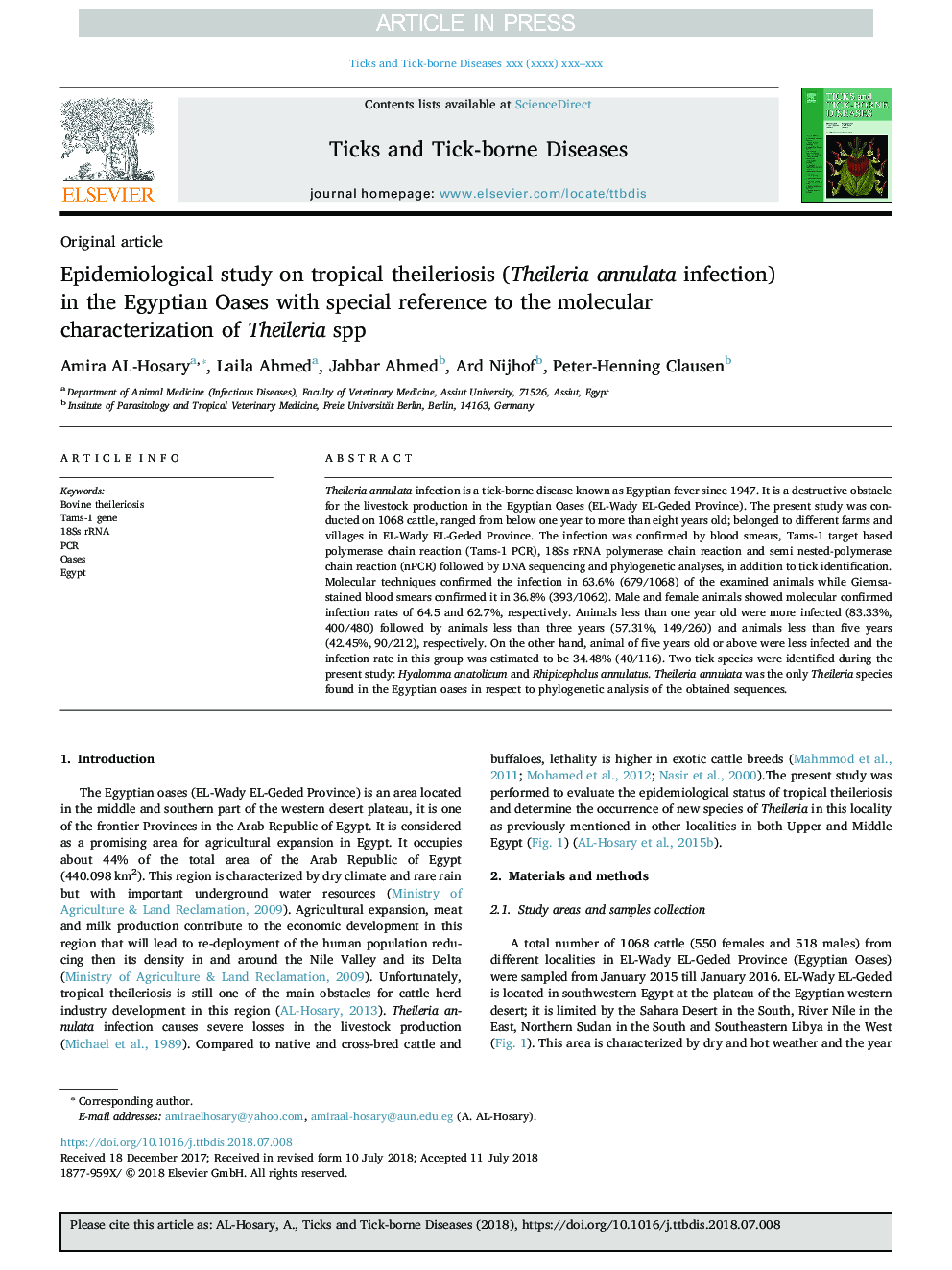| Article ID | Journal | Published Year | Pages | File Type |
|---|---|---|---|---|
| 8965637 | Ticks and Tick-borne Diseases | 2018 | 5 Pages |
Abstract
Theileria annulata infection is a tick-borne disease known as Egyptian fever since 1947. It is a destructive obstacle for the livestock production in the Egyptian Oases (EL-Wady EL-Geded Province). The present study was conducted on 1068 cattle, ranged from below one year to more than eight years old; belonged to different farms and villages in EL-Wady EL-Geded Province. The infection was confirmed by blood smears, Tams-1 target based polymerase chain reaction (Tams-1 PCR), 18Ss rRNA polymerase chain reaction and semi nested-polymerase chain reaction (nPCR) followed by DNA sequencing and phylogenetic analyses, in addition to tick identification. Molecular techniques confirmed the infection in 63.6% (679/1068) of the examined animals while Giemsa-stained blood smears confirmed it in 36.8% (393/1062). Male and female animals showed molecular confirmed infection rates of 64.5 and 62.7%, respectively. Animals less than one year old were more infected (83.33%, 400/480) followed by animals less than three years (57.31%, 149/260) and animals less than five years (42.45%, 90/212), respectively. On the other hand, animal of five years old or above were less infected and the infection rate in this group was estimated to be 34.48% (40/116). Two tick species were identified during the present study: Hyalomma anatolicum and Rhipicephalus annulatus. Theileria annulata was the only Theileria species found in the Egyptian oases in respect to phylogenetic analysis of the obtained sequences.
Related Topics
Life Sciences
Agricultural and Biological Sciences
Animal Science and Zoology
Authors
Amira AL-Hosary, Laila Ahmed, Jabbar Ahmed, Ard Nijhof, Peter-Henning Clausen,
